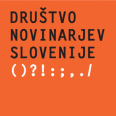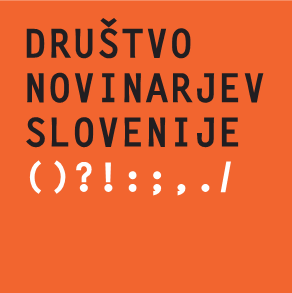Photojournalism market in Slovenia – analysis summary
The survey on the state of the photojournalism market was carried out by the Slovenian Association of Journalists and its Branch of Photojournalists and Photographers within the framework of the project Trade Unions for a Fair Recovery, led by the European Trade Union Confederation and the European Federation of Journalists. It was completed by 57 photographers. This is not a large number, but we believe that it is a representative sample of professional photographers considering that the Branch of Photojournalists and Photographers has 81 members.
The survey has shown that almost half of the photographers have a gross monthly income of just €1,200 or less, and almost half of them do work other than photography to make ends meet. Most photographers reported that they are not satisfied with the prices their clients are willing to pay.
The service pricing model that we propose aims to encourage photographers and clients to price the services factoring in all the real costs of doing business. The aim is for the photographers to use all the tools at their disposal to determine and justify to the client a service price that provides them with social and financial security, and sufficient career development opportunities.
The pricing tool consists of a market analysis that can be used as a reference framework for setting the price, a calculator with instructions on how to use it, a spreadsheet for calculating the annual fixed costs to be completed by each photographer, and general recommendations for negotiations.
The majority of the photographers who completed the survey are men. Their age ranges from 35 to 55, with very few under 35 and none under 25, which is probably due to expensive photographic equipment, low prices, and lack of opportunities on the market. The vast majority of photographers work in central Slovenia; there were no respondents from six of Slovenia’s 12 statistical regions.
Of the 57 respondents only ten are full-time photojournalists. More than half of them are self-employed, which is consistent with National Statistical Office data for 2021 showing that almost 70% of photographers are self-employed. Half of them work only in photography, the rest also perform other jobs. Of that half, the majority would give up other work if they earned enough to make a living, which means that more than a quarter of photographers do not earn enough from photography.
The respondents’ main clients are print media with a national reach. Most of them work for multiple clients, in particular companies, cultural institutions and the NGO sector; the most common reason for this is insufficient earnings in the media sector. Just under half of the respondents also work with foreign clients and virtually all of those agree that the pay for the same work abroad is higher – by half on average and sometimes as much as 100%.
Worryingly, only 5% of self-employed photographers sign a contract before starting work. Their cooperation with clients is typically based on e-mail or even verbal agreements. The commercial relationship between the photographer and the client is therefore not formally defined, which increases risks and potential misunderstandings both regarding payment for services and the transfer of copyright.
The monthly income of most respondents is irregular. A quarter of those who completed the survey earn on average less than €500 per month from photography, the rest between €800 and €1,500 at the most. Considering that the vast majority photograph using their own equipment, and taking into account the cost of living and other expenses, it is clear that their income does not guarantee survival in the long run: with the current prices of photographic gear, photographers cannot afford to update their old and obsolete equipment.
More than half of the photographers are paid after they have completed the commission, and the payment varies considerably depending on their employment status. The highest per-event payments are reported by full-time photojournalists, which we understand to mean project work alongside their regular job. Full-time employees in other sectors are paid slightly less, followed by the self-employed; at the tail end of the pay scale are photographers who do their work freelance under one-off works contracts. One would assume that the self-employed, who are the biggest cohort of photographers, would be likely to be paid more than full-time employees, as they must factor in other costs, social security contributions, etc. But we assume that full-time employees are paid more because they have the security of a regular job and can refuse commissions if the pay is too low. The survey provides more detailed payment data by duration of event and by project.
A fifth of photographers are occasionally paid per photo, with pay ranging from €13.5 to €40 per photo. Photographers say they would like to earn an average of around €70 per photo.
Roughly 14% of the respondents receive a monthly flat rate of €1,175 on average but would like to receive €740 more. The flat rates and fees are typically proposed by the client. Most photographers do not publish or update their prices regularly. The most common reason for price increases are increases in the basic cost of living. In half of the cases clients have accepted increases without objection. The rest either agreed to a compromise between the old and the new price, or, which is the case for about a fifth of the photographers, simply did not accept the new price, so either the photographer kept the old price, or the client found a new photographer.
Although most of the respondents consider it important that the client receives a breakdown of the price, they do not calculate all the costs itemised, presumably because if they did the price would increase and would no longer be acceptable to the client. Costs that are broken down in more detail in the survey are sometimes at least partially included in the final price, but are likely to be adjusted in order to reach a price that is still acceptable. At the same time, photographers also adapt to the type of client, i.e. different working conditions, requirements, the quantity of photographs ordered, differences between clients, whether they are regular clients or new clients, whether they are commercial or non-commercial clients, the client’s budget or their pricing, etc.
The respondents typically transfer to the client only those material copyrights that are necessary for the specific type of use the client wants. A third of photographers most often restrict the transfer based on intended use, limiting the onward transfer of rights to a third party, requesting time or space limitations, or non-exclusive transfer. Unfortunately, a third do not restrict the transfer of rights at all, allowing unlimited use by clients. The high share of those who do not even know whether they are restricting any rights is worrying, as is the share of those who can no longer use their work freely as authors, which in effect means that they are not restricting any rights. It is also clear from the responses that respondents are not well informed about the transfer of rights.
Respondents report of occasional failures of attribution, but in most cases the author is properly attributed by the client. When infringements occur, photographers are most likely to ask the client to credit the photographer, almost a third of them invoice the client, which implies that the photograph was stolen, and about a fifth do not react to an infringement at all. A smaller percentage of photographers must deal with infringements through lawyers and even lawsuits.
To reduce these wide differences in prices and payments, practically all the photographers who completed the questionnaire consider it important to discuss the prices of services. The number of questionnaires completed suggests that photographers are aware of the unsustainable situation in the profession and that there is a growing desire for regulation.
The analysis is part of the Trade Unions for a Fair Recovery project, led by the European Trade Union Confederation and the European Federation of Journalists. It is financed by the European Commission as part of the Covid-19 recovery fund. The aim of our project is to improve the presence and visibility of the association, increase the number of active members and revitalize assets by region and media, improve communication with members and the public, and improve the position of photojournalists on the market.


 Postani naš član
Postani naš član  Podari del dohodnine
Podari del dohodnine  Prijavi napad
Prijavi napad 